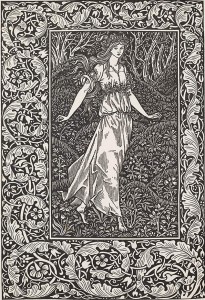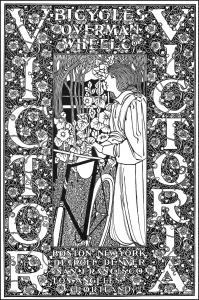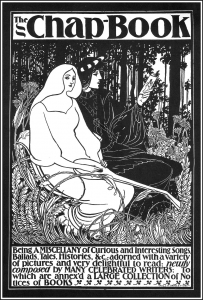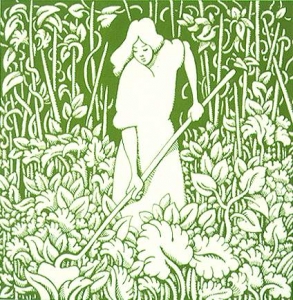 John Alcorn (1935-1992)
John Alcorn (1935-1992)
The Green Curtain
Illustration for book jacket for Eudora Welty’s A Curtain of Green & Other Stories (New York: Harcourt, Brace, Jovanovich, 1980)
India ink with flat color overlay
Every time I see this book jacket illustration,* I notice the image and I stop to admire its lusciousness. When I look at it, it’s almost as though I can smell its verdant growth. Despite its two-dimensional composition, it feels very 3-D and even experiential to me. I can imagine my toes squishing in the moist soil standing with the woman who wields the hoe midst an abundance of plant life. Just smell the greenness of that vivid growth. Some of the words I’ve used to describe how I feel about John Alcorn’s image are really very antithetical to what you actually see in this simple image. The green vibrancy of plant life is an illusion in every way. Alcorn used the green color to surround and define the drawn plant life he imaged. He also used it to define the shading, the three-dimensional shape of the leaves and vines, but nothing Alcorn drew of that nature is actually conveyed in the color green. While the image is very vibrant, it is essentially a vibrancy of white against a green field, not a field of green against white. So the luxuriant verdancy of growing things is an illusion, as is the vibrancy of tonality implied by the composition.
The style of creating an illustration where the image and especially fertile nature is conveyed in white (which is really the color of the paper the illustration is produced upon) against the applied darker color that defines the image and surrounds it is indeed one with a venerable visual history.
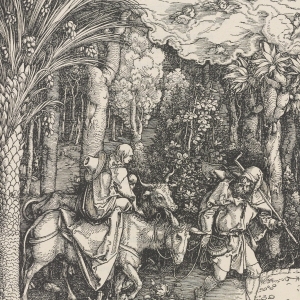 Albrecht Dürer (1471-1528)
Albrecht Dürer (1471-1528)
Detail from The Life of the Virgin, 1511
Woodcut
The Getty Research Institute, 2011.PR.21.
In the 16th century Albrecht Dürer (1471-1528) created woodcut prints that used the paper ground to make his images that were defined by lines laid from the black printing ink. For Dürer nature is presented as background, while his religious story takes center stage. By the late 19th century William Morris designed and sometimes wrote and illustrated a variety of books for his Kelmscott Press. One, The Wood Beyond the World, published in 1894, was a fantasy novel where a troubled man is carried to another land during a storm. There he finds an enchantress, giants, and a variety of challenges. Morris’s illustrations are certainly influenced by the earlier stylized gothic period tapestries and book illumination. In the image from this book (see below) the notice how carpet-like the ground is drawn below the maiden’s feet. And despite the heavier use of black ink that defines the grass and flowers of the landscape, the illustration clearly conveys the colorfulness of the scene and the healthy growth on the land.
William Morris (1834-1896)
Story illustration for The Wood Beyond the World (Hammersmith, Eng.: Kelmscott Press, 1894)
Within a year or two, illustrators in the U. S. picked up the style and transformed it in their own work. Will Bradley, for example, used this linear black on white media for a variety of images he made in 1895 and 96 as posters advertising specialty magazines, as covers for some of those magazines, and as advertising posters for Victor Bicycles
Will H. Bradley (1868-1962)
Victor Bicycles, 1896 The Poet and His Lady, 1895
Advertising illus. for Overman Wheel CO. (April 1896) Poster illus. for The Chap-Book (Jan. 1895)
When John Alcorn appropriated this style of illustrating nature, he was harkening back to an earlier style.
* It has been tucked away in my essay idea file folder called ‘post ideas.’
May 30, 2013
By Joyce K. Schiller, Curator, Rockwell Center for American Visual Studies, Norman Rockwell Museum


